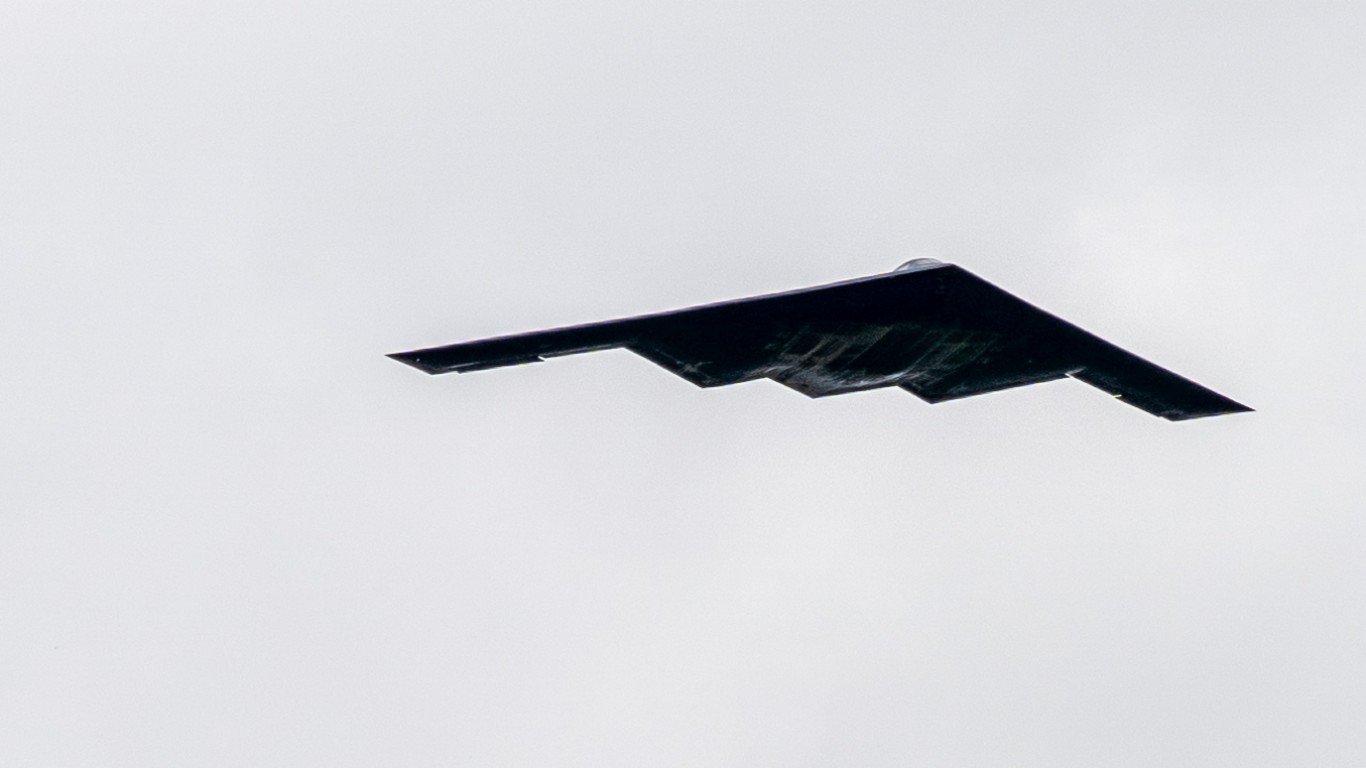

When the White House announced its fiscal year 2021 budget on February 10, the Pentagon once again came out a big winner. The proposed budget included $705.4 billion in fiscal year spending for the Department of Defense, essentially flat with the 2020 fiscal year allocation of $704.6 billion. The national security budget proposal totaled $740 billion.
Among the nation’s largest defense contractors, there were winners and losers. The big winners were nuclear programs. The 2021 budget includes more than $45 billion to modernize the U.S. missile defense force, a program begun in 2017 under the Obama administration that originally was estimated to cost some $400 billion by fiscal year 2026.
In January 2019, the Congressional Budget Office (CBO) revised its middle-term cost estimate to $494 billion between 2019 and 2028. Spending through 2046 could total $1.2 trillion, according to a CBO report from October of 2017.
Bombers, Missiles and Submarines: The Nuclear Triad
A prime beneficiary of spending on the country’s missiles and nuclear weapons programs is Northrop Grumman Corp. (NYSE: NOC). By 2028, the Pentagon expects to spend almost $50 billion developing a Northrop-built B-21 bomber capable of delivering atomic bombs. The 2021 budget proposes spending $2.8 billion on the bomber program.
Northrop also is likely to win a $60 billion contract to replace the Air Force’s intercontinental ballistic missile force. The Pentagon’s Ground-Based Strategic Deterrent (GBSD) program was being contested by Northrop and Boeing Co. (NYSE: BA) until Boeing dropped out last July, complaining that the competition was rigged. Lockheed Martin Corp. (NYSE: LMT) dropped out of the bidding for the program in 2017. Spending in 2021 is penciled in at $1.5 billion.
Boeing had second thoughts, and by September, had suggested to Northrop that Boeing would fit nicely into the GBSD program as a partner. Northrop said “Thanks, but no thanks,” and named Lockheed as one of nine partners (none named Boeing) on the project. A final award decision is due by the end of this year, and the Northrop-led team may be the de facto winner, unless Boeing can garner some political support for its cause.
The CBO estimates that federal spending on the GBSD program will reach about $56 billion over the next 10 years for just the Defense Department portion. The U.S. Department of Energy is expected to spend about $5 billion on the program over the next 10 years.
The third leg of the nuclear triad is the U.S. Navy’s nuclear submarine force. A total of more than $4 billion from the fiscal year 2021 budget has been allocated to prime contractor General Dynamics Corp. (NYSE: GD) and shipbuilder Huntington Ingalls Inc. (NYSE: HII) for continued development of a new Columbia-class ballistic missile sub.
The CBO’s 10-year projection of costs for a new submarine totals $107 billion, the bulk of which ($96 billion) will be spent by the Pentagon and the rest by the Department of Energy.
So Why Doesn’t Northrop Stock Get a Bigger Boost
In the first few days following the release of the proposed fiscal year 2021 budget, Northrop stock posted a gain of about 1.5%, more than any other major defense contractor. General Dynamics shares have posted a gain of about 0.5%, and Boeing shares have risen by just 0.1%. Lockheed stock has dipped by around 0.7%, but Huntington Ingalls stock is down about 8%, largely due to the lack of a major surface ship component in the proposed budget.
Goldman Sachs analyst Noah Poponak downgraded Northrop’s shares from a Buy to the equivalent of a Sell in one move on the same day that the 2021 budget proposal was released. The two-step drop, though highly unusual, reflected, according to Poponak, organic revenue growth slower than the rest of the industry, tighter margins and slower free cash growth. The stock also traded at a slightly higher multiple (16.1), compared to the industry average of around 15.
Northrop Grumman stock added nearly 43% last year, just less than the 44% added by United Technologies Corp. (NYSE: UTX). Both trailed industry leader Lockheed, which added nearly 53% to its share price last year.
Of 20 ratings on Northrop stock, nine are Strong Buys, four have the stock as a Buy, six rate the stock a Hold and there is the single Sell rating from Goldman Sachs. With a consensus price target of $411.10, the implied upside on the stock is around 11.5%.
Smart Investors Are Quietly Loading Up on These “Dividend Legends” (Sponsored)
If you want your portfolio to pay you cash like clockwork, it’s time to stop blindly following conventional wisdom like relying on Dividend Aristocrats. There’s a better option, and we want to show you. We’re offering a brand-new report on 2 stocks we believe offer the rare combination of a high dividend yield and significant stock appreciation upside. If you’re tired of feeling one step behind in this market, this free report is a must-read for you.
Click here to download your FREE copy of “2 Dividend Legends to Hold Forever” and start improving your portfolio today.
Thank you for reading! Have some feedback for us?
Contact the 24/7 Wall St. editorial team.


